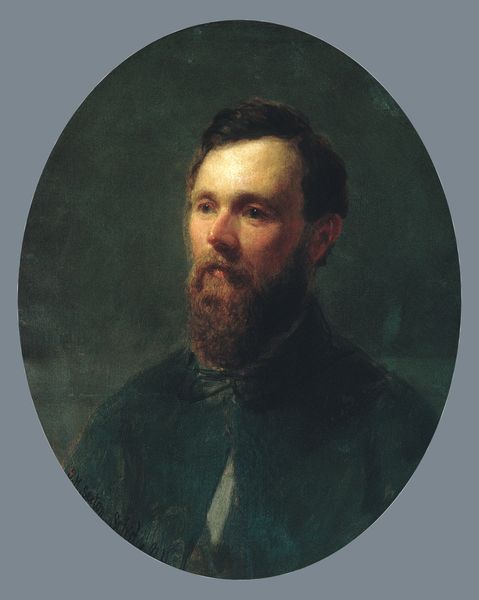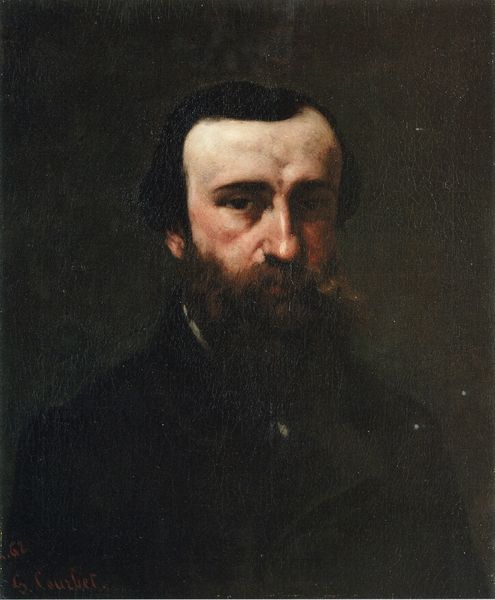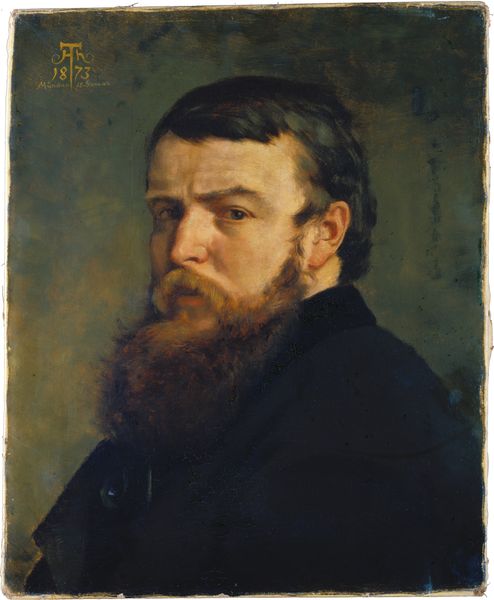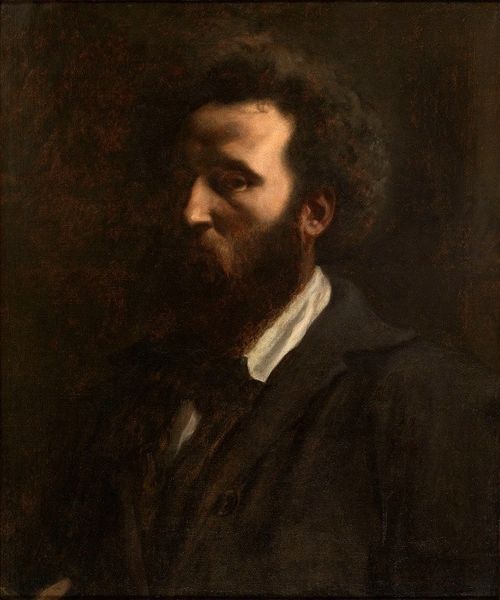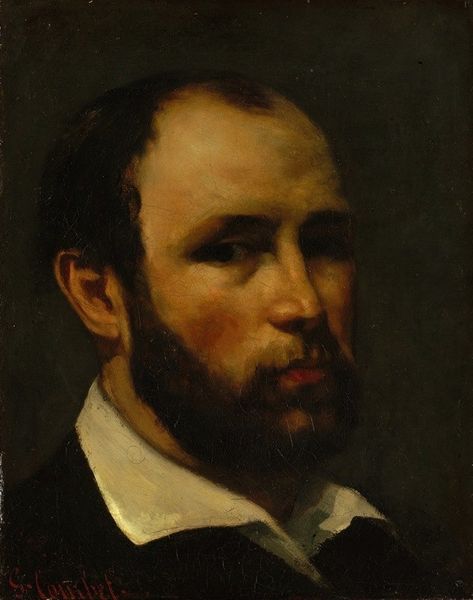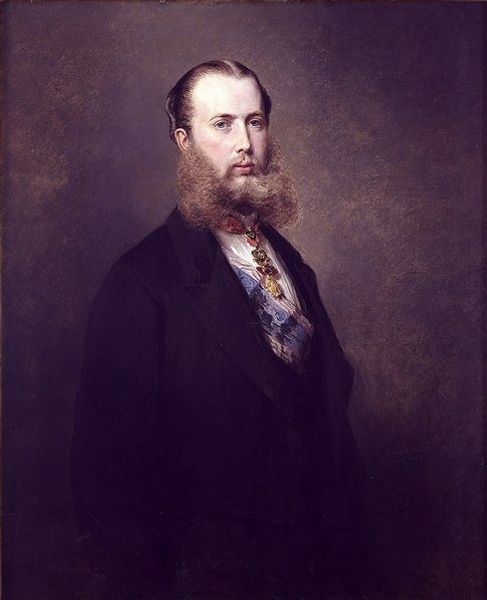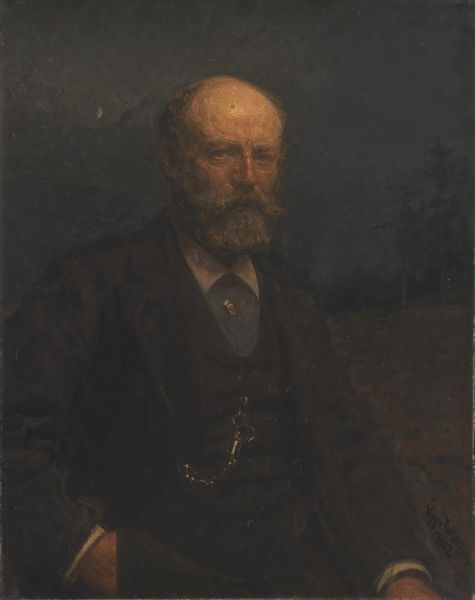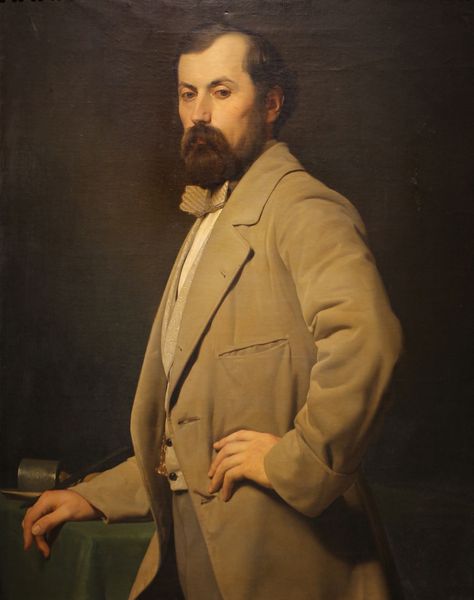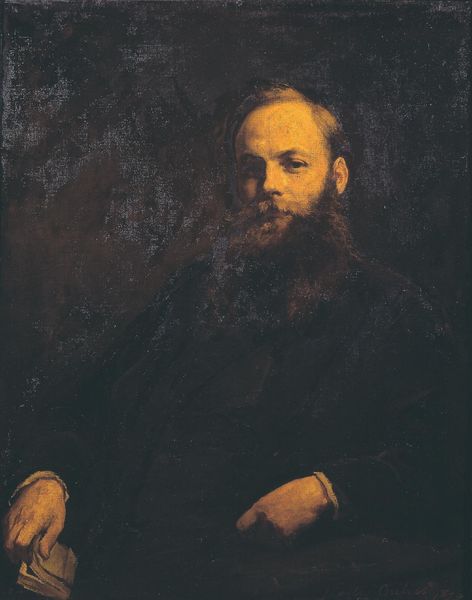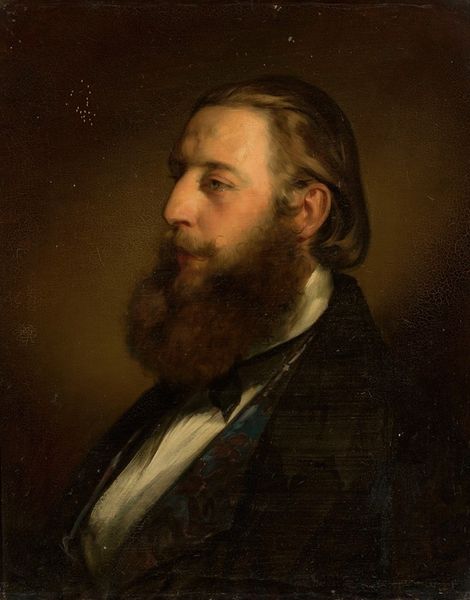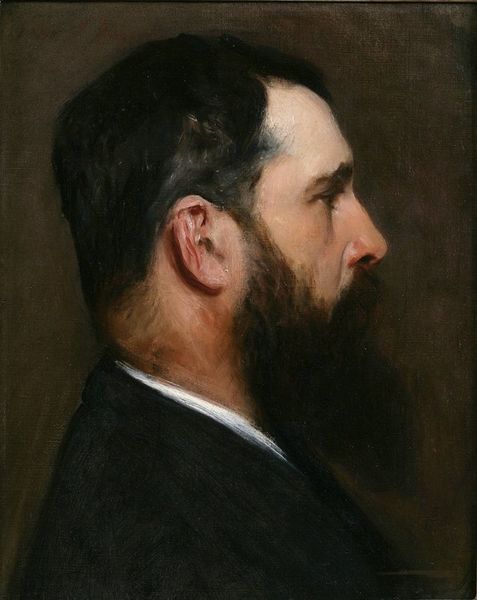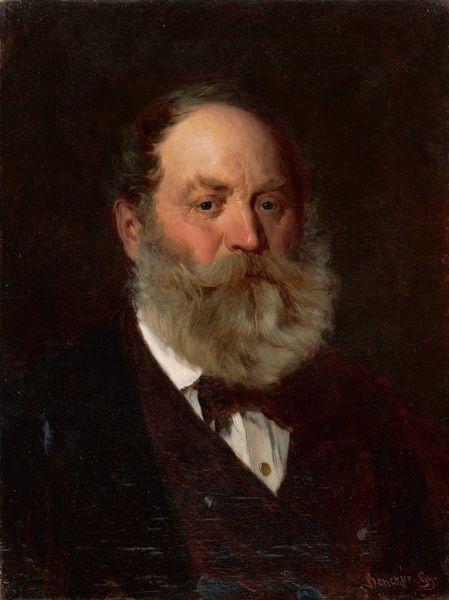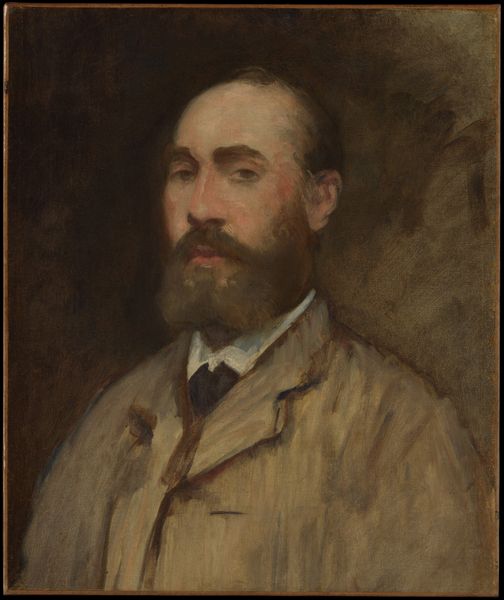
Dimensions: 96.5 x 76.5 cm
Copyright: Public Domain
Editor: Here we have Otto Scholderer’s "Self-Portrait," created between 1875 and 1876 using oil on canvas. I'm struck by the formality and slightly melancholic air of the subject. What can you tell us about this painting? Curator: This self-portrait offers a glimpse into the negotiation of identity during a period of significant social and artistic change. Think about it: Scholderer, as a realist painter, is situating himself within a lineage while also declaring his individual perspective. The gaze is direct, but the slightly downturned mouth hints at an awareness, perhaps even a critique, of societal expectations for male artists at the time. What does his clothing suggest to you? Editor: It seems like a blend of respectability and perhaps a hint of bohemian flair with the beard and the way he holds his hat? Curator: Precisely! And it's this tension that I find compelling. He is simultaneously participating in and subtly challenging the established order. Consider the rise of Impressionism at this time – a radical departure from academic norms. Scholderer positions himself on the edge of these movements, caught between tradition and innovation. What role might the absence of typical artist tools or backdrops play? Editor: Maybe he's trying to move away from the stereotype of the artist, presenting himself as more of an intellectual or a member of the bourgeoisie? Curator: Absolutely! He’s making a statement about the artist’s role in society. It raises questions about who has the right to represent themselves and how. By removing artistic tools and conventions, Scholderer invites us to consider the power dynamics inherent in self-representation. Editor: That's fascinating. I hadn't thought about the painting in terms of challenging norms and playing with expectations. Curator: Exactly. It encourages us to see how artistic choices can reflect and refract the complexities of the artist's position within their social and historical context. Editor: Thank you. That provides an interesting new perspective on the piece. Curator: My pleasure! I found myself understanding the complex socio-political nuances embedded within the painting more vividly after our dialogue.
Comments
stadelmuseum about 2 years ago
⋮
Otto Scholderer, originally from Frankfurt, lived in London from 1871 to 1899, where he worked mainly as a portrait and still life painter. Here, he depicts himself as an elegant Victorian gentleman and, thus, as an artist who has become part of English society. The painting style is influenced by his connection to France. Above all, the soft transitions and the mild, brown-golden light are reminiscent of Fantin-Latour’s work, a close friend of his. Scholderer painted this representative self-portrait for an exhibition at the Royal Academy. For him, it was a calling card of his skill, which he also showed at exhibitions in Paris and Frankfurt.
Join the conversation
Join millions of artists and users on Artera today and experience the ultimate creative platform.
